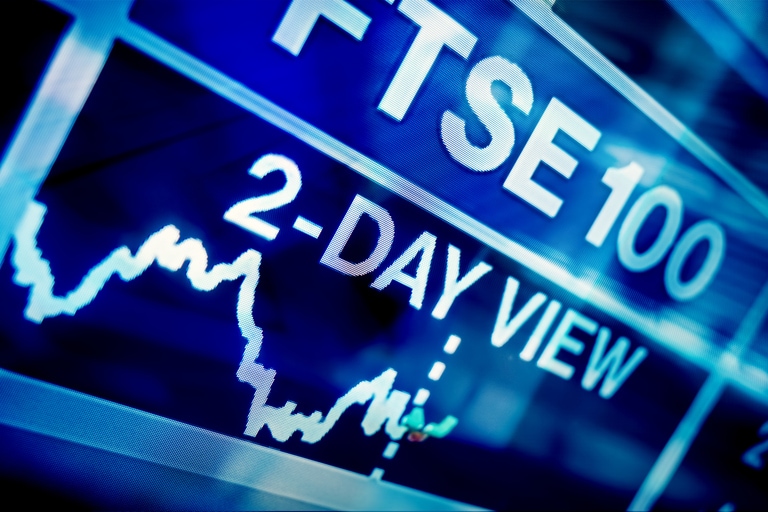Last night’s Fed minutes didn’t tell us much more than what we already knew from the post-meeting statement and Powell’s press conference, with European markets finishing the day higher, while US markets slipped back.
The recent banking turmoil appears to have tempered the reaction function of many Fed officials in terms of how many more hikes are needed to keep a lid on prices, while the risks of a modest recession have increased, according to Fed staffers. The primary focus for now still remains on inflation which is still too high and sticky, and a labour market that is proving increasingly resilient.
Yesterday’s inflation numbers did little to suggest that another 25bps hike wasn’t forthcoming even as headline CPI for March fell to 5% from 6%, rising less than expected on a monthly basis by 0.1%.
The better-than-expected number initially helped to push 2-year yields sharply lower, however, this proved to be short-lived, given that on the core measure, prices rose on an annual basis to 5.6% from 5.5% in a move that on the balance of probabilities now is expected to see the Fed hike rates again by another 25bps at the next meeting in May.
The bipolar reaction of bond markets serves to highlight the high levels of uncertainty there are about the future path of interest rates.
There is certainly some optimism that prices are heading in the right direction and that inflation is slowing, however, there is also plenty of room for wishful thinking as markets continue to price in the prospect of rate cuts by year-end.
This outcome still seems improbable given how long it has taken thus far for US CPI to come down from its peaks last year at 9.1% in June. On the core measure, we’ve remained steady at 5.6% for all of this year, and are only 1% below the peaks seen in September last year.
Against this sort of stodginess in core prices, it’s hard to imagine inflation falling quickly enough to justify the sort of rapid repricing which would prompt the Fed to start cutting rates only a matter of months after their last rate hike.
It’s especially hard to countenance when core CPI is still above the current Fed funds rate, and also well above the Fed’s 2% target.
On the plus side, we are seeing evidence that forward-looking indicators are heading in the right direction with today’s March US PPI numbers expected to show a further slowing of price pressures. The recent prices paid numbers on the ISM last week showed a reduction in inflation pressures and these should be borne out in a fall to PPI final demand from 4.6% to 3%, while core PPI is expected to slow from 4.4% to 3.4%.
Weekly jobless claims are also expected to be in focus after the surprise revisions higher that we saw come in throughout the month of March. Last week saw claims rise to 228k, while the previous week’s number of 198k was revised up to 246k.
The two previous weeks were also revised upwards by 56k and 38k respectively, reflecting a sharp reassessment of how the US labour market has been performing over the past few weeks. This is expected to continue this week with 235k claims expected. While higher than originally thought a couple of weeks ago, the claims numbers will need to go a lot higher before the Fed becomes concerned about rising unemployment.
Having seen the UK economy revised up to 0.1% GDP growth in Q4, thus avoiding the ignominy of a technical recession, the economic data since the end of last year has shown much greater resilience than many had feared at the end of last year.
This has been particularly notable in the services sector, which after a weak Q4 has seen recent monthly PMI numbers recover strongly in February and March. Consumer spending has also picked up sharply with a lot of the recent retail updates showing that while consumers do have money to spend, they are spending it more judiciously. In January the UK economy grew by 0.3%, despite sky-high inflation, as consumer spending rebounded with retail sales gaining 0.9%.
This was followed by a 1.2% gain in February, although sales volumes have lagged due to higher prices. Against such a backdrop, another positive GDP number for February could well go some way to increasing the odds of a positive Q1 GDP print for 2023, with expectations of a 0.1% gain, although index of services could act as a drag after a strong January of 0.5%.
Construction output is also expected to rebound by 1% in February after a sharp -1.7% decline in January.
At around the same time as the UK GDP numbers German CPI inflation is expected to be confirmed at 7.8% for March.
In an encouraging development for the global economy earlier today the latest China trade numbers showed that the Chinese economy started to gain momentum in March, as exports surged by 14.8%, the first rise since September, while imports declined a less than expected -1.4%, suggesting that domestic demand was starting to recover after months of lockdowns.
Despite this encouraging development, Asia markets had a mixed session, and this looks set to translate into a mixed open, with the CAC40 set to get off to a strong start after LVMH released a strong set of Q1 sales numbers after the close last night.
EUR/USD – pushed up towards the 1.1000 area yesterday, with the 1.1030 area as the next key resistance. Found support at the 1.0830 area at the start of the week, with key support just below that at 1.0780.
GBP/USD – the main resistance on the cable sits at the high of last week at 1.2530. Strong support currently at 1.2270, with further gains towards 1.2660 still preferred while above 1.2250.
EUR/GBP – looks set for a retest of the 50-day SMA and trend line resistance at 0.8850, from the highs this year at 0.8970. Currently have trend line support at 0.8740 from the August lows at 0.8350.
USD/JPY – still has cloud resistance at 134.50 which remains a barrier to further gains. Currently has cloud support at 132.50.
CMC Markets erbjuder sin tjänst som ”execution only”. Detta material (antingen uttryckt eller inte) är endast för allmän information och tar inte hänsyn till dina personliga omständigheter eller mål. Ingenting i detta material är (eller bör anses vara) finansiella, investeringar eller andra råd som beroende bör läggas på. Inget yttrande i materialet utgör en rekommendation från CMC Markets eller författaren om en viss investering, säkerhet, transaktion eller investeringsstrategi. Detta innehåll har inte skapats i enlighet med de regler som finns för oberoende investeringsrådgivning. Även om vi inte uttryckligen hindras från att handla innan vi har tillhandhållit detta innehåll försöker vi inte dra nytta av det innan det sprids.






